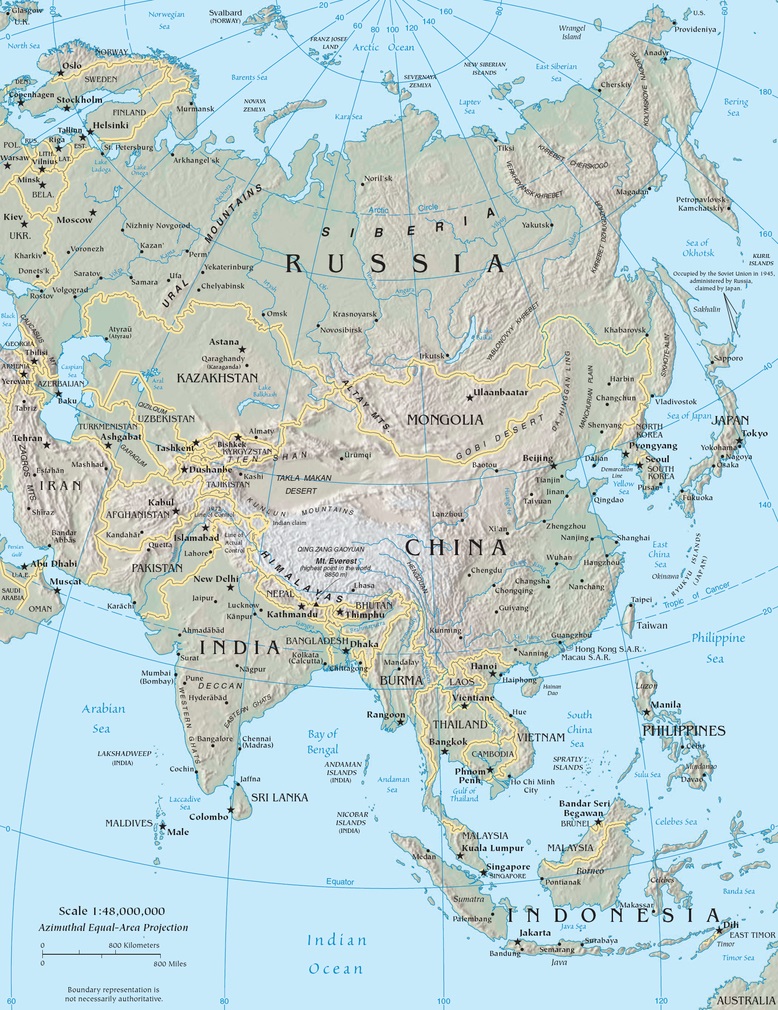Asia
Geography

Asia is the World’s largest continent – 43,810,582 km². covering approximately 30% of the Earth’s land and 8.66% of the Earth’s surface.
It is bordered by the Ural Mountains to the east, the Arctic Ocean to the north, the Pacific Ocean to the west and the Indian Ocean to the south.
The highest point in the World, is Mount Everest (8,848 m), situated in the Tibetan region of the Himalayas.
The longest river in Asia and third longest in the World is the Yangtze (6,211 km) which flows through China.
The largest desert in Asia is the Gobi desert measuring 281,800 km².
Regions & Seasons
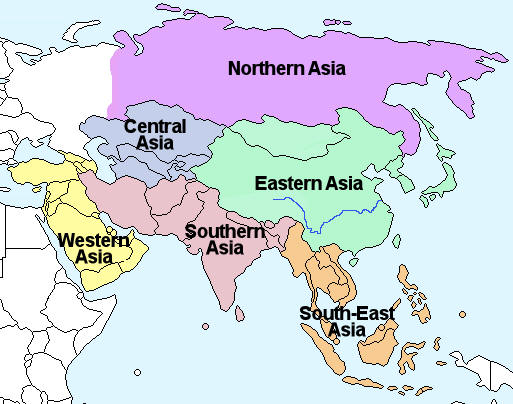
Asia is broadly divided into six regions as shown on the map right.
Asia lies almost entirely in the northern hemisphere and the seasons of all are similar. The seasons of southern and south-east Asia vary slightly because of the monsoons.
Northern Asia, Central Asia, Eastern Asia
– Spring – March, April, May
– Summer – June, July, August
– Autumn – September, October, November
– Winter – December, January, February
Southern Asia, South-East Asia
– Spring – December, January, February
– Summer – March, April, May
– Autumn – June, July, August
– Winter – September, October, November
Climate
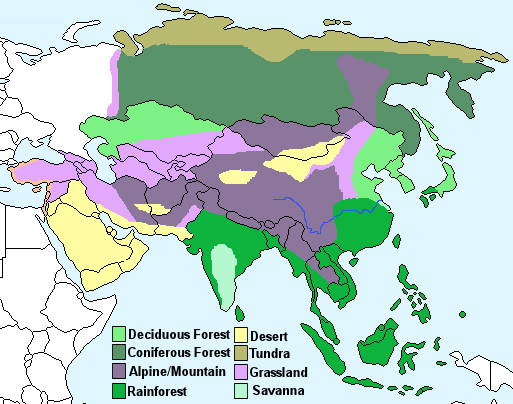
The climate of Asia varies according to location and physical geography. There are eight different climate types:
Deciduous forest – Four distinct seasons with warm summers and cold, wet winters. The trees shed their leaves in autumn.
Coniferous forest – Also known as Taiga, cold and dry with snowy winters and warmer summers.
Alpine/mountain – Cold, windy and snowy. It is winter from October to May with temperatures below freezing, while summer is from June to September where the temperature can reach 15°C.
Rainforest – High temperatures and high rainfall throughout the year.
Desert – Warm to high temperatures with very little rainfall.
Tundra – This area is characterised by a layer of permafrost (soil that has remained below freezing for at least two years. Winters are very cold, summers are warm and there is little rainfall.
Grassland – Hot summers and cold winters with above average rainfall.
Savanna – Very high temperatures all year and rain during the summer season only.
Countries
There are 53 countries in Asia including Russia and Turkey which lie in both Europe and Asia and Taiwan which is technically a part of China and not officially recognised as a country by the United Nations.
Afghanistan, Armenia, Azerbaijan, Bahrain, Bangladesh, Bhutan, Brunei, Cambodia, China, Georgia, Hong Kong, India, Indonesia, Iran, Iraq, Israel, Japan, Jordan, Kazakhstan, North Korea, South Korea, Kuwait, Kyrgyzstan, Laos, Lebanon, Macau, Maldives, Malaysia, Maldives, Mongolia, Myanmar, Nepal, Oman, Pakistan, Palestine, Philippines, Qatar, Russia, Saudi Arabia, Singapore, Sri Lanka, Syria, Taiwan, Tajikistan, Timor-Leste, Turkey, Turkmenistan, United Arab Emirates, Uzbekistan, Vietnam, Yemen.
Click on the map (right) for a larger image.
Demography
Asia is the most populated continent containing around 60% of the World’s population. The population of Asia is growing with a growth rate of approximately 2%.
The total population of Asia is approximately 3,879,000,000 (2005). Eastern, southern and south-east Asia are the most populated while the desert, mountain and tundra regions are the least populated.
The countries with the highest populations (to the nearest million) are:
China – 1,384 million
India – 1,046 million
Indonesia – 227 million
Bangladesh – 133 million
Japan – 127 million
China, India and Japan are the most economically developed countries. The large oil producing nations – Iran, Iraq, Kuwait, Qatar, Saudi Arabia and the United Arab Emirates are also in Asia.
Economic growth in Asia has improved living standards for millions of people, but there remains a huge poverty problem and the gap between rich and poor is growing. According to World data records around 60% of the world’s poorest people live in Asia.
Plant Life
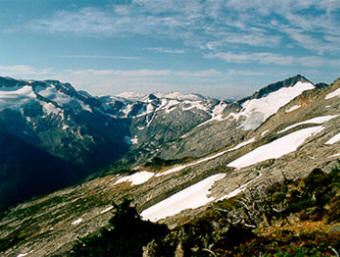
The plant life of Asia is wide and varied and differs according to climatic region.
Due to the cold during the winter months, only short grasses and shrubs can survive in the tundra and alpine/mountain regions. The picture (left) shows an alpine/mountain region.
The desert regions are home to those plants that can survive the arid conditions like cactii.
The coniferous forest region contains trees such as pine, fir and spruce.
The deciduous forest region has a wealth of plant life and includes tall and short trees, shrubs, small plants and mosses
The grassland and savanna regions are characterised by large open areas of tall or short grass.
The rainforest areas are jungles of dense, wet forests.
Animal Life

The animal life of Asia is wide and varied depending on the climatic region.
The tundra is home to reindeer, foxes and wolves, while camels and lizards can be found in the desert region.
Bears can be found in the coniferous forest region while the mountainous region of China is home to the giant panda.
Harvard Reference for this page:
Heather Y Wheeler. (2015). Asia. Available: https://www.naturalhistoryonthenet.com/Continents/asia.htm. Last accessedThursday, July 21, 2016
Continents Pages
Africa Antarctica Asia Australasia/Oceania 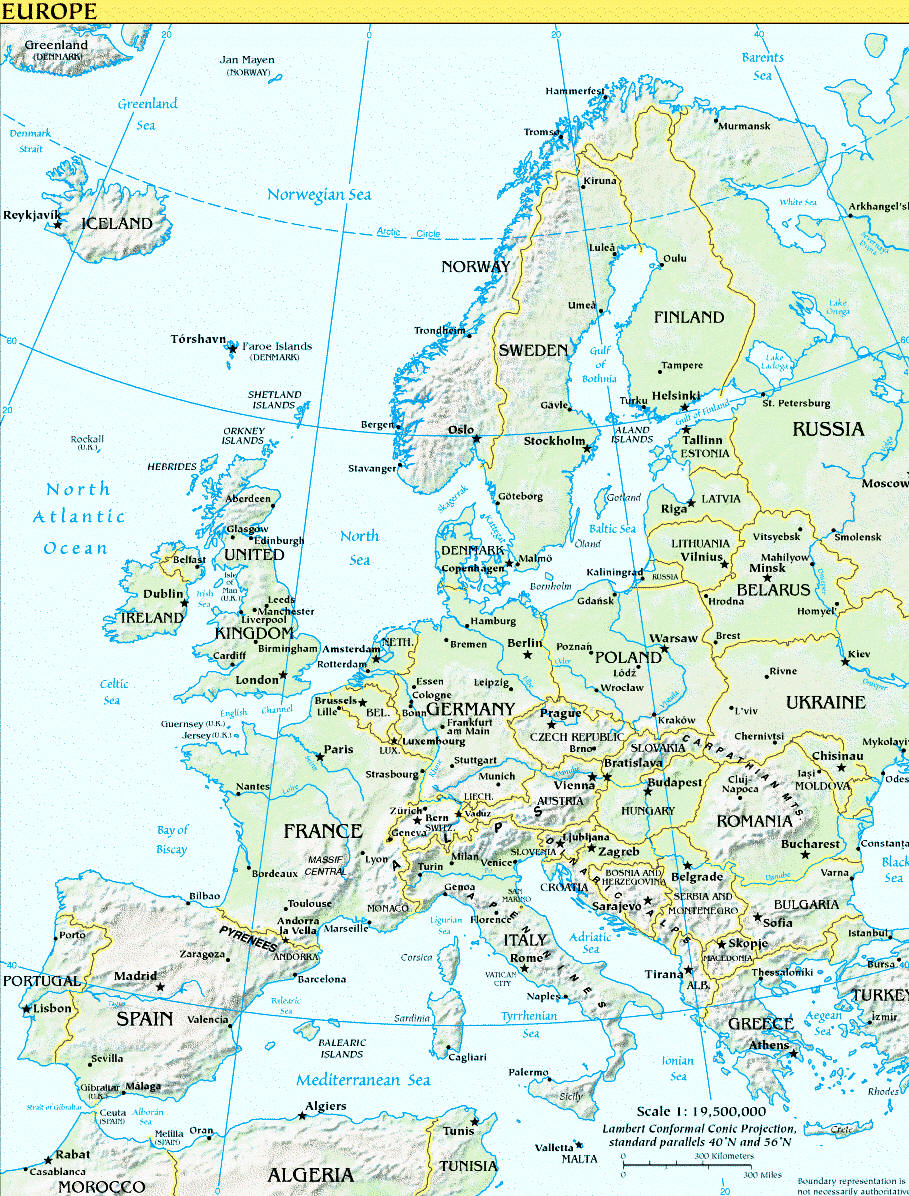 North America South America
North America South America

